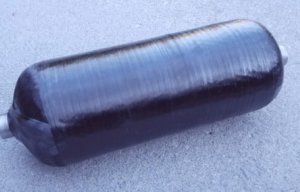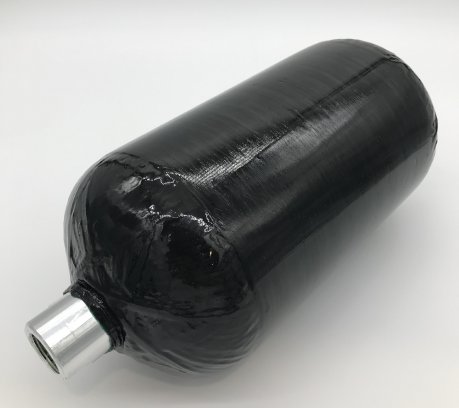
Project to develop smart composite pressure vessels
Deecom process leaves the primary carbon material intact and undamaged.

4th May 2022
Innovation in Textiles
|
Bristol, United Kingdom
Engineers at the UK’s National Composites Centre (NCC) and partners have successfully reclaimed continuous carbon fibres from a complete pressure vessel and re-used them to manufacture a new one.
This represents a significant milestone in the development of the country’s hydrogen capability.
As the gas has low energy density it needs to be compressed and stored at very high pressures of between 350 to 700 bar. This makes high-strength, lower-weight carbon fibre the material of choice, especially for hydrogen pressure vessels in vehicles such as cars or aircraft, where power-to-weight is critical. Demand for carbon-fibre is expected to grow five-fold between 2025 and 2030, exceeding global manufacturing capacity. Creating viable, low cost recovery processes that retain the inherent strength of continuous carbon fibres for recycling is therefore a key to the development of the hydrogen economy.
Until recently, recycling processes for composite components such as aircraft wings and wind turbine blades have resulted in short fibres with lower mechanical properties than virgin fibre, and while there are applications for them, they are not suitable for re-use in high performing products.
Partnering with Lancashire-based B&M Longworth, the NCC team has now successfully reclaimed continuous carbon fibre from end-of-life composite pressure tanks, using the Deecom process. Originally designed to remove waste polymers from filters and production equipment, the process uses superheated steam under compression to penetrate microscopic fissures in the composite’s polymer, where it then condenses. On decompression it boils and expands, cracking the polymer and carrying away broken particles. This pressure swing cycle is then repeated until all the matrix (the material suspended in the polymer) has been separated from the fibre, allowing the monomers to also be reclaimed for possible reprocessing.
Any length
Crucially, the Deecom process leaves the primary component material intact and undamaged, allowing for any fibre length to be retained. As a result, NCC engineers and Cygnet Texkimp, a Cheshire-based manufacturer of fibre handling and conversion technology, have been able to use the reclaimed continuous carbon fibre to make a new pressure vessel using filament winding.
The partnership is now looking to work with manufacturers to scale and industrialise the process, sharing the knowledge of recent recycling trials. The next step is to undertake fibre characterisation analysis of the reclaimed material and recycled vessel, as the team works towards their ultimate goal – developing disruptive technologies that enable sustainable hydrogen storage solutions.
“Achieving continuous fibre recovery is a significant step towards our goal of a fully recyclable certified tank – the critical technology barrier we need to address if we are to embed hydrogen in our energy mix and meet net zero targets,” said Marcus Walls-Bruck, chief engineer for NCC Hydrogen. “We are at the stage of being able to share this expertise in fibre recovery and our extensive design exploration work for composite pressure vessels. We want to hear from companies interested in joining us on this journey to sustainable pressure vessels as we accelerate UK capabilities.”

Business intelligence for the fibre, textiles and apparel industries: technologies, innovations, markets, investments, trade policy, sourcing, strategy...
Find out more